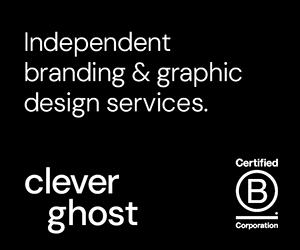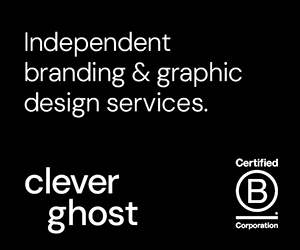06/03/2014
Critical Shortage Of Midwives - INMO
The results of a midwifery staffing survey, carried out by the Irish Nurses & Midwives Organisation (INMO) and released today, confirms the health service has a critical shortage of midwives in all of its 19 maternity hospitals/units.
In addition the survey finds that the internationally recommended midwife to birth ratio, of 1 : 29.5 births, is not in place, in any hospitals/units, with the ratio varying from 1 : 30 to 1 : 55 and a national average of 1 : 38.
This internationally recommended midwife to birth ratio, as put forward by Birthrate Plus, is accepted by the NHS in the UK, the Royal College of Midwives, the Royal Colleges of Obs and Gynae, Paediatrics and Child Health and Anaesthetists and the UK Independent National Audit Office .
The staffing survey, carried out in February, also confirms the following:
• the maternity unit in Portlaoise is the poorest staffed unit, in the country, at a ratio of one midwife to 55 births and requires 33 additional midwives, immediately, to reach the recommended ratio;
• the Coombe Women and Infants University Hospital, which is now the support, for Portlaoise, is itself severely understaffed with a midwife to birth ratio of 1 : 40;
• Our Lady of Lourdes Hospital (maternity unit), despite numerous reports, and recommendations, calling for improved staffing, remains grossly understaffed with a ratio of one midwife to 37 births.
INMO General Secretary Liam Doran said: "This survey confirms we are over 550 midwives short of the number needed to deliver safe, better and high quality care to mothers and babies. Births in this country continue to be at a very high level, relative to the EU, and have increased, by over 16%, in the last decade while midwifery staffing numbers have been cut. It is also a fact that births are becoming increasingly complex which, in turn, puts even greater demands upon midwives and maternity services generally.
"What is needed now is immediate action on the recruitment of additional midwifery staff. We do not need any more reports or reviews as best practice, in the form of midwife to birth ratio is now well accepted internationally and needs to be implemented here without delay."
(CD/IT)
In addition the survey finds that the internationally recommended midwife to birth ratio, of 1 : 29.5 births, is not in place, in any hospitals/units, with the ratio varying from 1 : 30 to 1 : 55 and a national average of 1 : 38.
This internationally recommended midwife to birth ratio, as put forward by Birthrate Plus, is accepted by the NHS in the UK, the Royal College of Midwives, the Royal Colleges of Obs and Gynae, Paediatrics and Child Health and Anaesthetists and the UK Independent National Audit Office .
The staffing survey, carried out in February, also confirms the following:
• the maternity unit in Portlaoise is the poorest staffed unit, in the country, at a ratio of one midwife to 55 births and requires 33 additional midwives, immediately, to reach the recommended ratio;
• the Coombe Women and Infants University Hospital, which is now the support, for Portlaoise, is itself severely understaffed with a midwife to birth ratio of 1 : 40;
• Our Lady of Lourdes Hospital (maternity unit), despite numerous reports, and recommendations, calling for improved staffing, remains grossly understaffed with a ratio of one midwife to 37 births.
INMO General Secretary Liam Doran said: "This survey confirms we are over 550 midwives short of the number needed to deliver safe, better and high quality care to mothers and babies. Births in this country continue to be at a very high level, relative to the EU, and have increased, by over 16%, in the last decade while midwifery staffing numbers have been cut. It is also a fact that births are becoming increasingly complex which, in turn, puts even greater demands upon midwives and maternity services generally.
"What is needed now is immediate action on the recruitment of additional midwifery staff. We do not need any more reports or reviews as best practice, in the form of midwife to birth ratio is now well accepted internationally and needs to be implemented here without delay."
(CD/IT)
Related Irish News Stories
Click here for the latest headlines.
09 August 2013
Mother And Daughter Hurt In Zoo Attack
A mother and her two-year-old daughter have been attacked by a tapir at Dublin Zoo. The attacked happened during a supervised, close-quarters visit, that the mother and daughter had been allowed to take. The two-year-old was attacked but both the animal and the girl's mother was injured when she tried to help her child.
Mother And Daughter Hurt In Zoo Attack
A mother and her two-year-old daughter have been attacked by a tapir at Dublin Zoo. The attacked happened during a supervised, close-quarters visit, that the mother and daughter had been allowed to take. The two-year-old was attacked but both the animal and the girl's mother was injured when she tried to help her child.
26 June 2012
Ireland Has The Highest EU Birth Rate
Ireland has the highest birth rate of any of the 27 EU countries, according to a report by the ESRI. The perinatal statistics show that 75,600 births were notified to the NPRS in 2010, compared to 58,261 births on 2001. Almost 28% of women giving birth were aged 35 years or older, up from 22% for this age group in 2001.
Ireland Has The Highest EU Birth Rate
Ireland has the highest birth rate of any of the 27 EU countries, according to a report by the ESRI. The perinatal statistics show that 75,600 births were notified to the NPRS in 2010, compared to 58,261 births on 2001. Almost 28% of women giving birth were aged 35 years or older, up from 22% for this age group in 2001.
21 December 2010
Ireland Tops European Birth Rate
Ireland had the highest birth rate in Europe in 2008 according to new figures from the ESRI. The Economic and Social Research Institute said there was a 5% increase in the number of births between 2007 and 2008. There were 75,587 births in Ireland in 2008, according to the ESRI's Perinatal Statistics Report.
Ireland Tops European Birth Rate
Ireland had the highest birth rate in Europe in 2008 according to new figures from the ESRI. The Economic and Social Research Institute said there was a 5% increase in the number of births between 2007 and 2008. There were 75,587 births in Ireland in 2008, according to the ESRI's Perinatal Statistics Report.
22 July 2015
Woman Gives Birth On Board Irish Navy Vessel
A woman has given birth to a baby girl on board an Irish naval vessel involved in the humanitarian rescue operation in the Mediterranean. The baby, named Destiny, was born after the mother went into labour four weeks premature. Baby Destiny was delivered by medics Paul O'Connell and Conor Kilbride.
Woman Gives Birth On Board Irish Navy Vessel
A woman has given birth to a baby girl on board an Irish naval vessel involved in the humanitarian rescue operation in the Mediterranean. The baby, named Destiny, was born after the mother went into labour four weeks premature. Baby Destiny was delivered by medics Paul O'Connell and Conor Kilbride.
13 August 2014
Irish Woman Charged With Concealing Birth Allowed To Return Home
An Irish backpacker in Australia who is accused of concealing the birth of her baby is to be allowed to return to Ireland ahead of her trial. It is understood that the 25-year-old is being charged with an offence of failing to report the birth of a child, including when a baby dies of natural causes.
Irish Woman Charged With Concealing Birth Allowed To Return Home
An Irish backpacker in Australia who is accused of concealing the birth of her baby is to be allowed to return to Ireland ahead of her trial. It is understood that the 25-year-old is being charged with an offence of failing to report the birth of a child, including when a baby dies of natural causes.
-




 Ireland WeatherToday:A sunny but frosty start for many. However cloud increases by midday with a few showers reaching the north coast, these mostly light but spreading inland this afternoon. Chilly. Maximum temperature 8 °C.Tonight:A rather cloudy evening with scattered showers. Becoming drier through the night with some good clear spells developing and a patchy frost away from coasts. Minimum temperature 0 °C.
Ireland WeatherToday:A sunny but frosty start for many. However cloud increases by midday with a few showers reaching the north coast, these mostly light but spreading inland this afternoon. Chilly. Maximum temperature 8 °C.Tonight:A rather cloudy evening with scattered showers. Becoming drier through the night with some good clear spells developing and a patchy frost away from coasts. Minimum temperature 0 °C.

